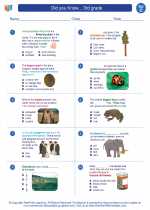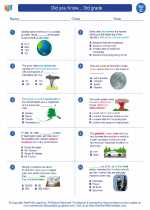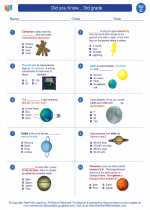Expression
An expression in mathematics is a combination of numbers, symbols, and operators (such as +, -, ×, ÷) that represents a value. Expressions can be simple or complex, but they are always used to represent a specific value or quantity.
Types of Expressions
There are several types of expressions:
- Numerical Expression: A combination of numbers and operations, such as 5 + 3 or 4 × 6.
- Variable Expression: An expression that contains variables, such as 3x + 2 or 4y - 7.
- Algebraic Expression: A combination of variables, numbers, and operations, such as 2x + 5y or 3a - 2b + c.
Understanding Expressions
To understand expressions, it's important to know the following:
- Terms: The parts of an expression that are separated by + or - signs. For example, in the expression 3x + 2y - 5, the terms are 3x, 2y, and -5.
- Coefficient: The numerical factor of a term. In the term 4x, the coefficient is 4.
- Constants: Numbers in an expression that do not change. In the expression 2x + 3, the constant is 3.
- Like Terms: Terms that have the same variables raised to the same powers. For example, 5x and 3x are like terms.
Practice Problems
Now, let's practice some expressions!
- Simplify the expression: 2x + 3y - 5x + 7y
- Write an expression for the following statement: "Twice a number added to 5."
- Combine the like terms in the expression: 4a + 2b - 3a - 5b
Summary
Expressions are an essential part of mathematics and are used to represent quantities and values in various contexts. By understanding the types of expressions and the components within them, you can work with expressions effectively and solve problems in algebra and arithmetic.
.◂Science Worksheets and Study Guides Third Grade. Did you Know... 3rd grade
Study Guide Did you Know... 3rd grade
Did you Know... 3rd grade  Worksheet/Answer key
Worksheet/Answer key Did you Know... 3rd grade
Did you Know... 3rd grade  Worksheet/Answer key
Worksheet/Answer key Did you Know... 3rd grade
Did you Know... 3rd grade  Worksheet/Answer key
Worksheet/Answer key Did you Know... 3rd grade
Did you Know... 3rd grade 

 Worksheet/Answer key
Worksheet/Answer key
 Worksheet/Answer key
Worksheet/Answer key
 Worksheet/Answer key
Worksheet/Answer key

The resources above cover the following skills:
LIFE SCIENCE
Unity and Diversity
Construct an argument from evidence to explain the likelihood of an organism’s ability to survive when compared to the resources in a certain habitat (e.g., freshwater organisms survive well, less well, or not at all in saltwater; desert organisms survive well, less well, or not at all in woodlands).
Create models that illustrate how organisms and their habitats make up a system in which the parts depend on each other.